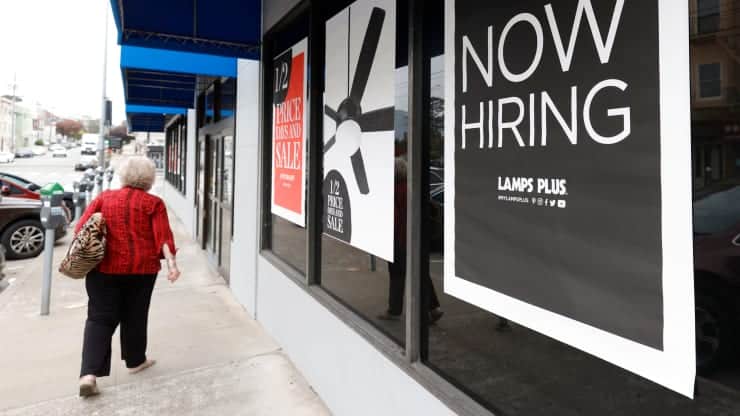Consumer confidence hit a 10-year low in November as inflation climbed to the highest levels since the early 1990s, complicating efforts from policymakers to sell the case that the current surge of price increases is temporary.
The plunge in sentiment happened as workers quitting their jobs hit a fresh record in a labor market that has nearly three million more positions available than there are people looking or jobs.
In a sign of confidence in the labor market, 4.43 million people quit, part of what some have called “The Great Resignation,” the Labor Department reported Friday. That number topped August’s 4.27 million and bought the quits rate as a percentage of the labor force to 3%, also a record.
At the same time, the University of Michigan Consumer Sentiment Index tumbled to 66.8 for November, according to a preliminary reading Friday. That was the lowest since November 2011 and well below the Dow Jones estimate of 72.5. October’s reading was 71.7, meaning that the November level represented a 6.8% drop.
The survey showed consumers expecting still-higher rates of inflation, with the 12-month forecast nudging up to 4.9%.
“Consumer sentiment fell in early November to its lowest level in a decade due to an escalating inflation rate and the growing belief among consumers that no effective policies have yet been developed to reduce the damage from surging inflation,” said Richard Curtin, the survey’s chief economist.
The survey showed 1 in 4 consumers reducing their living standards due to price increases, while half of all families anticipated lower real income in the year ahead when adjusted for inflation.
Seemingly robust increases in average hourly earnings, which rose 4.9% in October from a year ago, still have not kept pace with inflation, bringing real wages down by 1.2% from the same period in 2020.
“Rising prices for homes, vehicles, and durables were reported more frequently than any other time in more than half a century,” Curtin added.
The gauge also indicated a low level of belief that policymakers are acting appropriately to handle inflation, which ran at a 6.2% rate for October, according to the consumer price index released Wednesday.
The news on consumer sentiment comes with President Joe Biden’s popularity levels dropping as consumers increasingly worry about inflation.
Earlier this week, the White House rolled out a few proposals to try to help, including trying to alleviate cargo backlogs at major ports. Tie-ups in supply chains are helping drive the price increases, as is strong demand from consumers and escalating gas prices as the administration has sought to clamp down on fossil fuels.
The Federal Reserve faces a similar dilemma as it seeks to meet its mandate for price stability without raising interest rates. Central bank officials said last week they expect to start withdrawing their policy support, but only incrementally with small reductions in monthly bond purchases until the program is finished, likely by early summer 2022.
Republican critics blame the trillions in government spending and loose Fed policy for helping fan the inflation fire. Both Biden and Fed Chairman Jerome Powell have said they expect the inflationary pressures to ease later next year.
Job quits hit a record
Despite the continued decline in how people feel about the economy, workers again left their jobs in record numbers during September.
The September total was 1.1 million higher for the same month a year ago, when the quits rate was just 2.3%.
At the industry level, the quits rate for leisure and hospitality rose to 6.4%, a 0.3 percentage point gain from a month ago and owing to a big jump in arts, entertainment and recreation, which surged to 5.7% from 3.2%. Accommodation and food services held steady at 6.6%, the highest of any industry, as is typical.
Those who have quit their jobs this year largely have gone onto positions with higher salaries.
The Atlanta Fed’s wage growth tracker shows pay up 3.6% overall in September from a year ago, with job switchers seeing a 4.3% increase. Gains have been skewed to higher earners, with the top quartile seeing a 12-month increase of 4.9%.
Hires totaled 6.46 million for the month, a slight decline from August.
That exodus from current positions came as available jobs remained elevated.
The Labor Department in its Job Openings and Labor Turnover Survey said there were 10.44 million employment openings, well above the 7.68 million people looking for jobs in September. JOLTS data runs a month behind the department’s widely watched nonfarm payrolls report.
Job openings in September were expected to total 10.46 million, according to FactSet.

